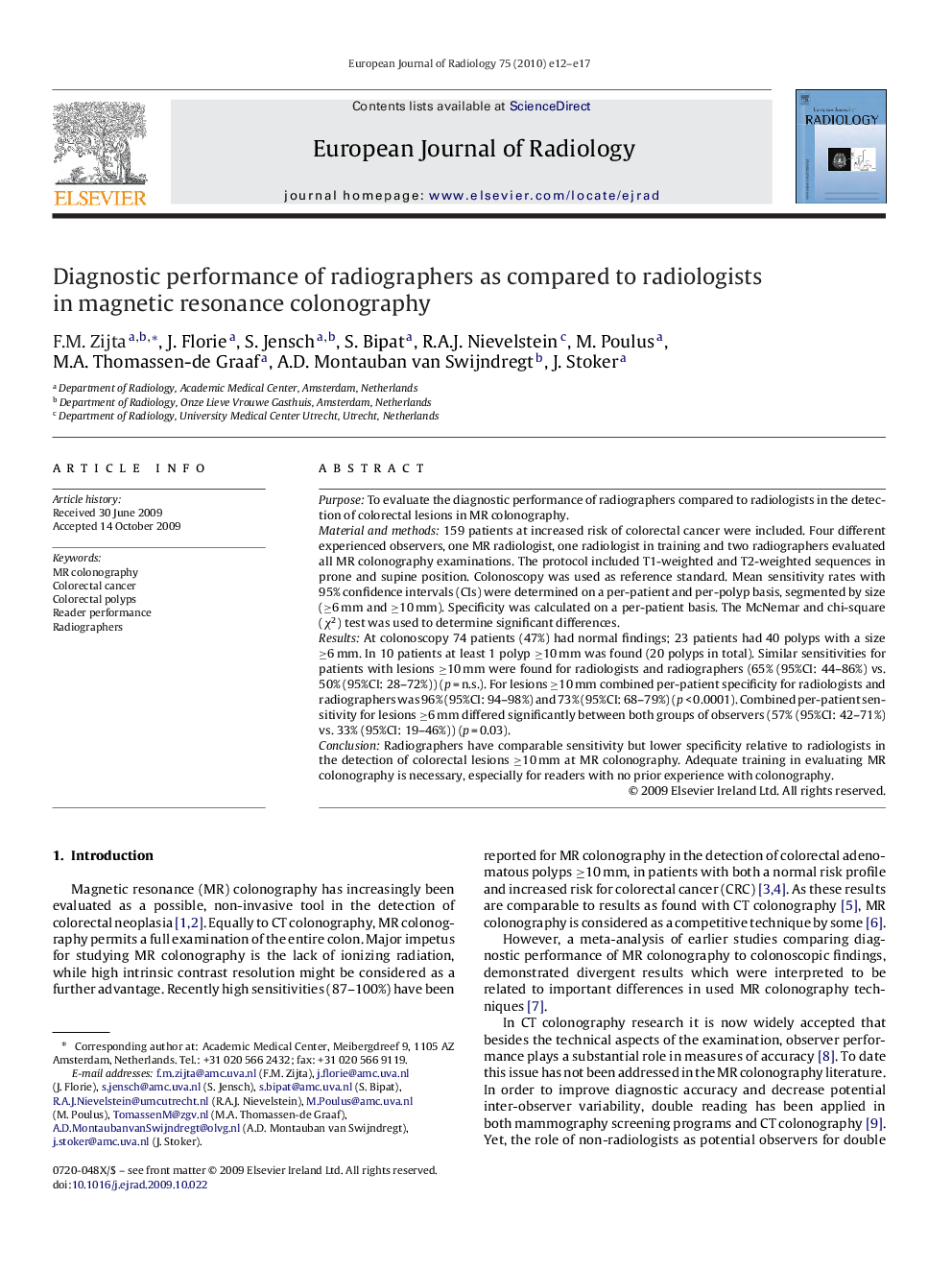| Article ID | Journal | Published Year | Pages | File Type |
|---|---|---|---|---|
| 4226976 | European Journal of Radiology | 2010 | 6 Pages |
PurposeTo evaluate the diagnostic performance of radiographers compared to radiologists in the detection of colorectal lesions in MR colonography.Material and methods159 patients at increased risk of colorectal cancer were included. Four different experienced observers, one MR radiologist, one radiologist in training and two radiographers evaluated all MR colonography examinations. The protocol included T1-weighted and T2-weighted sequences in prone and supine position. Colonoscopy was used as reference standard. Mean sensitivity rates with 95% confidence intervals (CIs) were determined on a per-patient and per-polyp basis, segmented by size (≥6 mm and ≥10 mm). Specificity was calculated on a per-patient basis. The McNemar and chi-square (χ2) test was used to determine significant differences.ResultsAt colonoscopy 74 patients (47%) had normal findings; 23 patients had 40 polyps with a size ≥6 mm. In 10 patients at least 1 polyp ≥10 mm was found (20 polyps in total). Similar sensitivities for patients with lesions ≥10 mm were found for radiologists and radiographers (65% (95%CI: 44–86%) vs. 50% (95%CI: 28–72%)) (p = n.s.). For lesions ≥10 mm combined per-patient specificity for radiologists and radiographers was 96% (95%CI: 94–98%) and 73% (95%CI: 68–79%) (p < 0.0001). Combined per-patient sensitivity for lesions ≥6 mm differed significantly between both groups of observers (57% (95%CI: 42–71%) vs. 33% (95%CI: 19–46%)) (p = 0.03).ConclusionRadiographers have comparable sensitivity but lower specificity relative to radiologists in the detection of colorectal lesions ≥10 mm at MR colonography. Adequate training in evaluating MR colonography is necessary, especially for readers with no prior experience with colonography.
